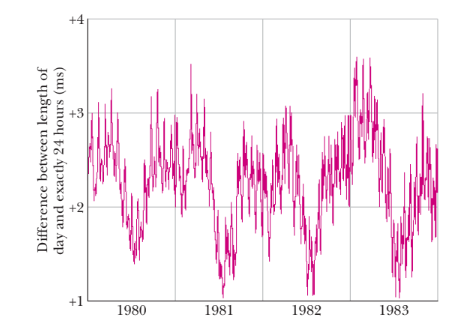Chapter 1- Measurement
INTRODUCTION TO PHYSICS:
To compare and measure things in sciences, we need different units which are established by experiments.
One purpose of physics is to design and conduct those experiments.
These experiments bring us advancements and new technology such as the GPS which is the result of the dedication of physicists.
MEASURING THINGS
Each physical unit is measured in its own unit by comparison with a standard.
Units are unique names assigned to quantities.
Standard corresponds to exactly 1.0 unit of that quantity.
To ensure that there is no problem in organising quantities and we can work with them efficiently, we assign standards to base quantities only.
Base quantities are those quantities on the basis of which other quantities can be expressed, e.g. speed is the ratio of length to time.
All other physical quantities are then defined in terms of their base quantities, e.g. speed is m/s in terms of base quantities, length and time.
It is ensured that the base standards are kept very precise.
THE SI UNITS
In 1971, the standards for base quantities was formed known as the International system of units, or the metric system.
To express very large quantities, scientific notation is used which is written to powers of 10, e.g. 3.5 x 10^5.
On computers, it takes a briefer look with the notation expressed in the form of E where E stands for the exponent of 10.
CHANGING UNITS
Much of the times, we convert units to different ones using a conversion factor.
The quantity to be converted is multiplied by a conversion factor, e.g. hours are multiplied by 60 to convert to minutes, and meters is multiplied by 1/1000 to convert it to kilometers.
In conversion, the units are always canceled.
DIFFERENT QUANTITIES
LENGTH:
In 1792, earth standard (between northpole and the equator) was defined to be the meter.
However, for practical reasons, the meter became known as the distance between the lines on the ends of a platinum–iridium bar, called the standard meter bar.
In 1960, a new standard for the meter, based on the wavelength of light, was adopted, and the previous standard was abandoned.
As the world progressed however, even the standard of krypton measurement was not termed as precise, and the meter was redefined as the distance traveled by light in a specified time interval, which is very precise since the speed of light, c, is always precisely 292 798 458 m/s.
TIME
In scientific language, time is the measure of how long an event lasts.
Any phenomenon that repeats itself is a possible time standard.
Earth’s rotations have been used for estimating time in many devices such as Quartz clocks but it was not very precise.
For more precision, atomic clocks have been adopted which work based on the jumping of electrons within atoms.

The graph of the rotations of the earth show that it is varying and therefore, doesn’t provide a very accurate time measurement.
MASS
The SI standard of mass is a cylinder of platinum and iridium which has been agreed upon to be a mass of 1 kilogram.
Accurate copies have been sent all around the world.
However, the mass of atoms can only be precisely compared to eachother.
Therefore, the carbon-12 atom is used as a unit for measuring mass of atoms and basically means 12 atomic units.
Density is mass per unit volume and is typically measured as either grams per cubic centimeter or kilograms per cubic meter.
The density of water which is 1000 g/cm^3, is used as the main comparison in densities and the density of anything compared with that of water is called the relative density.
PREFIXES
In physics, to represent large quantities, bases of 10 are used.
The following prefixes are used to represent the different powers of 10.
PREFIX | POWER OF 10 |
|---|---|
Pico | 10^-12 |
Nano | 10^-9 |
Micro | 10^-6 |
Milli | 10^-3 |
Kilo | 10^3 |
Mega | 10^6 |
Giga | 10^9 |
Tera | 10^12 |
 Knowt
Knowt
